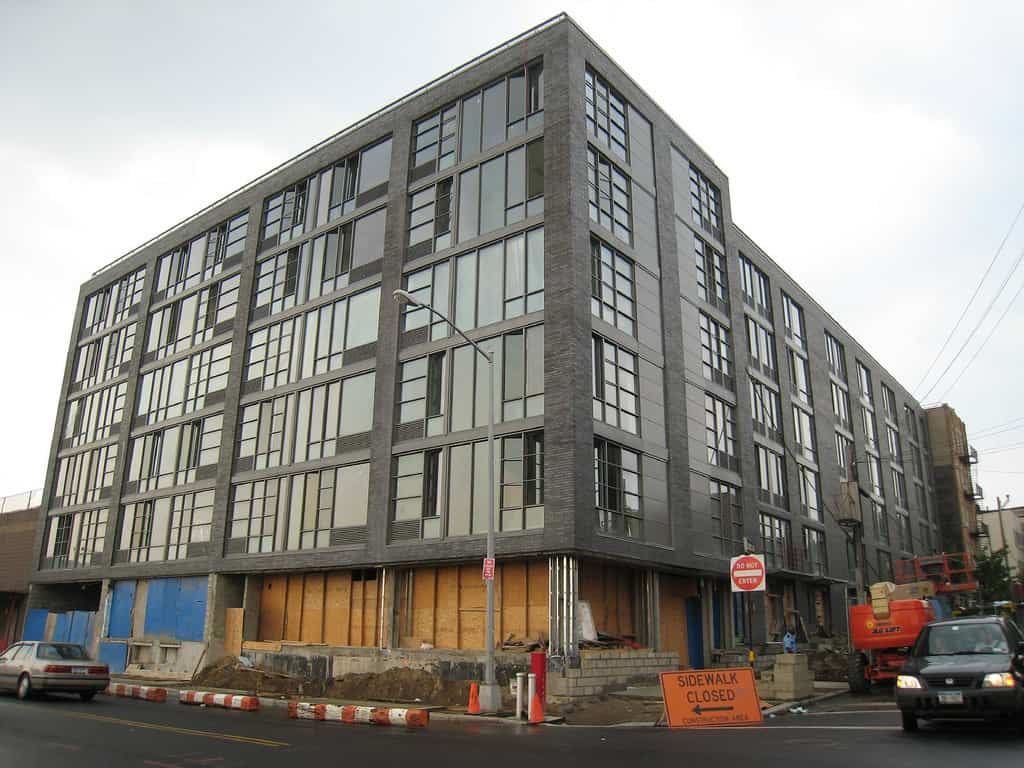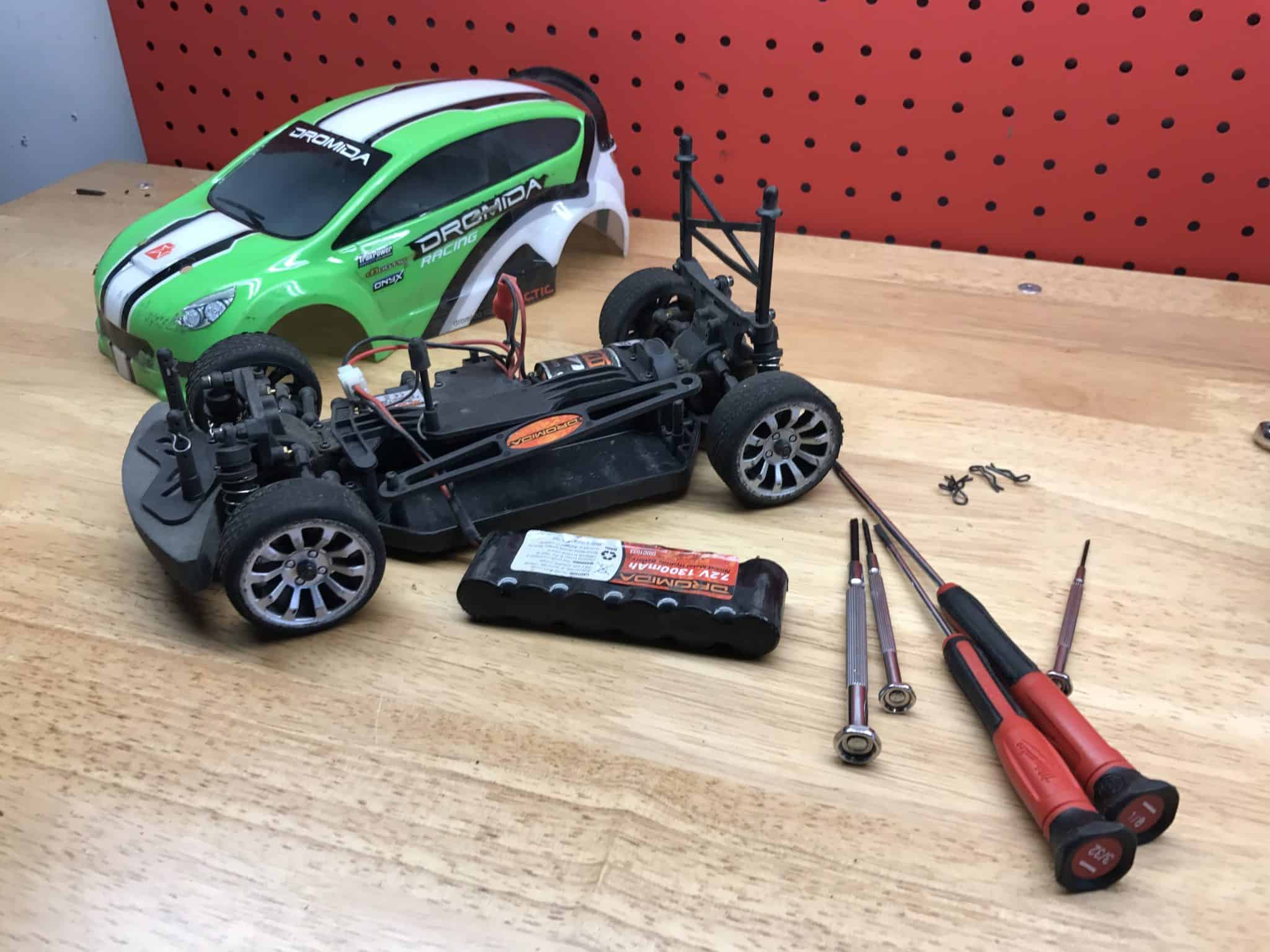
Our 100-square-foot studio space has been an amazing blessing for us since we work from home. It’s a small space but when you work from a 900 square foot home, it’s plenty big.
In a previous post we recapped the benefits of Shaw luxury vinyl flooring. Their product called Floorte seemed to be the ideal option for our space and one of the biggest selling points was the DIY installation. It only took us an afternoon to install our floor and this was our first time doing any type of project like this.
Prepping the Floor
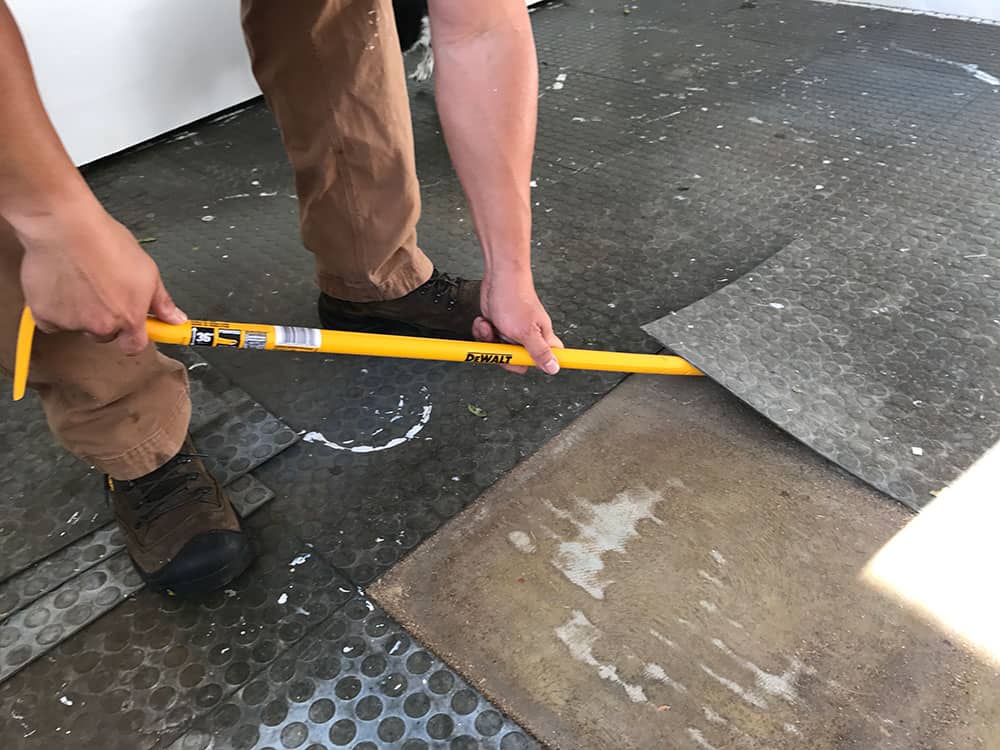
Before installing the flooring we wanted to paint the room, so no random drips stained the new floors. After the walls and ceiling were dry, we went to work removing the old vinyl square tiles. These had been there for years and many of them were already shifting. We used a large pry bar and had the old tile panels removed within 30 minutes.

Be cautious when removing old tiles as the adhesives can contain asbestos fibers or crystalline silica. If you don’t know for sure, then assume it does and refrain from scraping, sanding, or chipping away at old adhesive as this can release these toxic materials into the air.
After removing the old tiles, we used our shop vac to reach into the corners and along the walls to ensure there was no dirt that would hinder the installation of our new floors. The subfloor must be completely clean, flat, dry and structurally sound, before installing the tile.
Determining the Layout
Proper planning and floor layout will prevent having narrow plank widths at wall junctures or very short length pieces at the end of rows. The planks should be installed parallel to the longest exterior wall.
Installation

The Floorte luxury vinyl flooring is installed using their patented Fold n Tap method, which is a descriptive name for how it’s pieced together. No underlayment is required, just a smooth clean concrete base. Floorte does offer various padding options if you prefer but it’s not necessary. We installed our floors directly over our concrete subfloor.
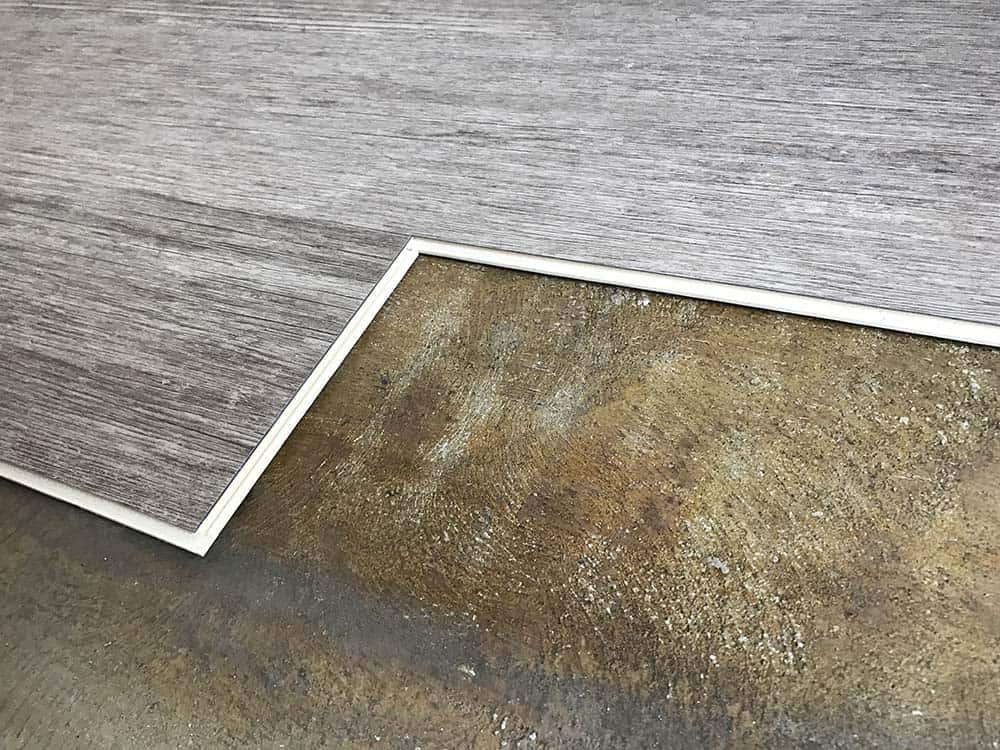
Floorte vinyl plank flooring is designed to be installed utilizing the floating method. This means the planks should never be secured to the subfloor. Cabinets and fixed objects should not be installed over the floors and a ¼” expansion space is required at each end of the flooring.
Once you’ve determined the layout and orientation of the plans, begin the installation of the planks from the left side of the room and work to the right with the planks in front of you. Use spacers along the walls to maintain the proper expansion space of ¼” using spacers.
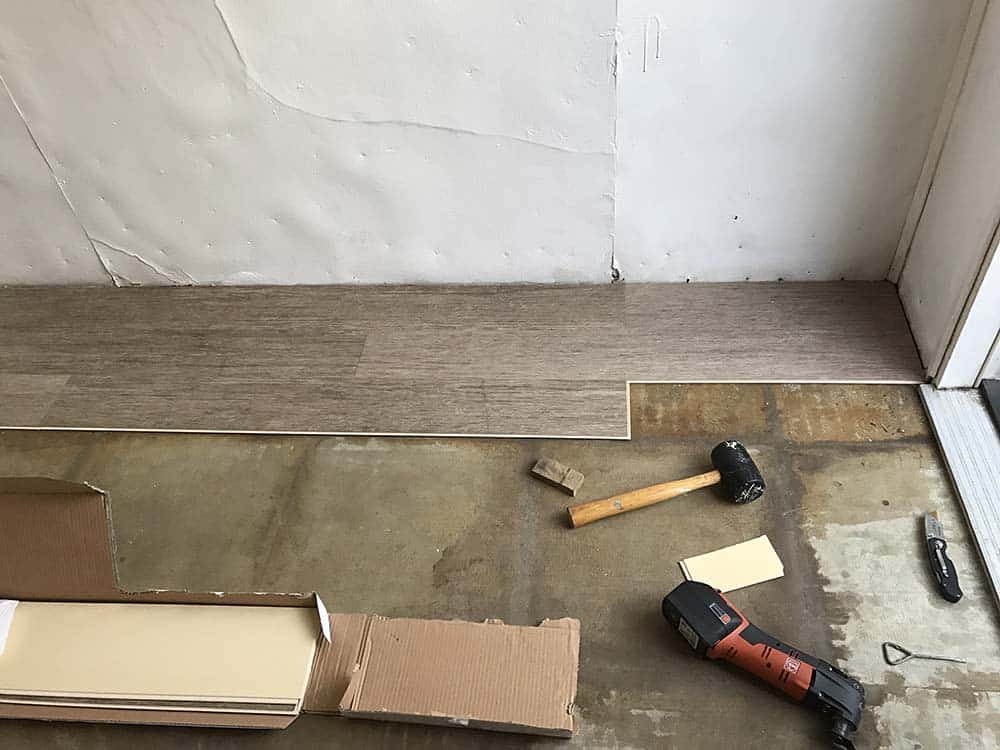
The alignment of the first plank and the first two rows of planks, will determine how successful your installation is. The first plank is placed ¼” away from the wall in the top left corner.
The second plank is installed by aligning and dropping the end of the tongue over the end groove of the first plank. It only takes a bit of light pressure to join the two planks together. If you are struggling to connect the planks, don’t force them as the tongues and grooves can break off. Re-check the alignment and try again.

We used a rubber mallet to help engage the short side of the plank by lightly tapping the plank so it sits flush with the adjacent plank.
For the second row, you’ll want to cut down the length of the first plank, so you get that random look. Each row of planks should be offset by about half the length of a plank, but it is really your personal preference. But any plank shorter than 6 inches will not look good.
The best method for cutting the planks is to score it with a utility knife on each side and then snap it in half with your foot. We used a miter saw to clean up some of the rough edges but that’s not ideal.
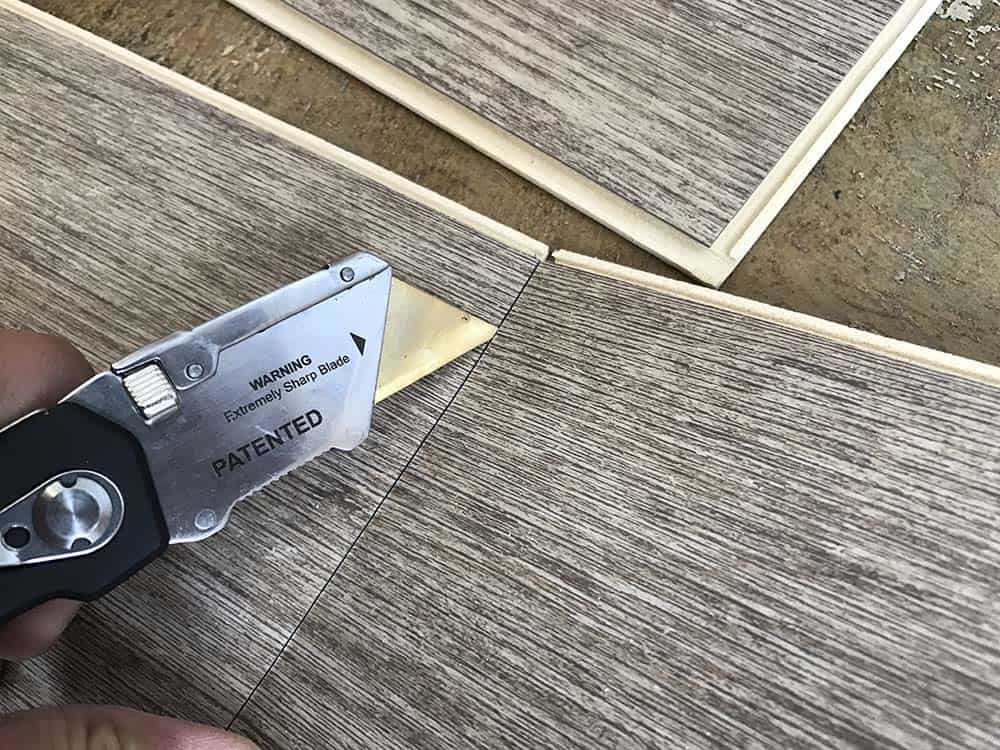
As you continue the install, make sure each row is square. If it isn’t then you’ll have to start over again from the point the flooring went askew. Remember the planks should snap together easily and nothing should be forced.
Once we got into a rhythm the flooring went in smoothly. It took a bit of massaging to get the planks to fit around a small corner and near the sill, but Floorte is easy to work with and we figured in a few extra planks when ordering in case we damaged any during install or came up short during the install.
Final Touches
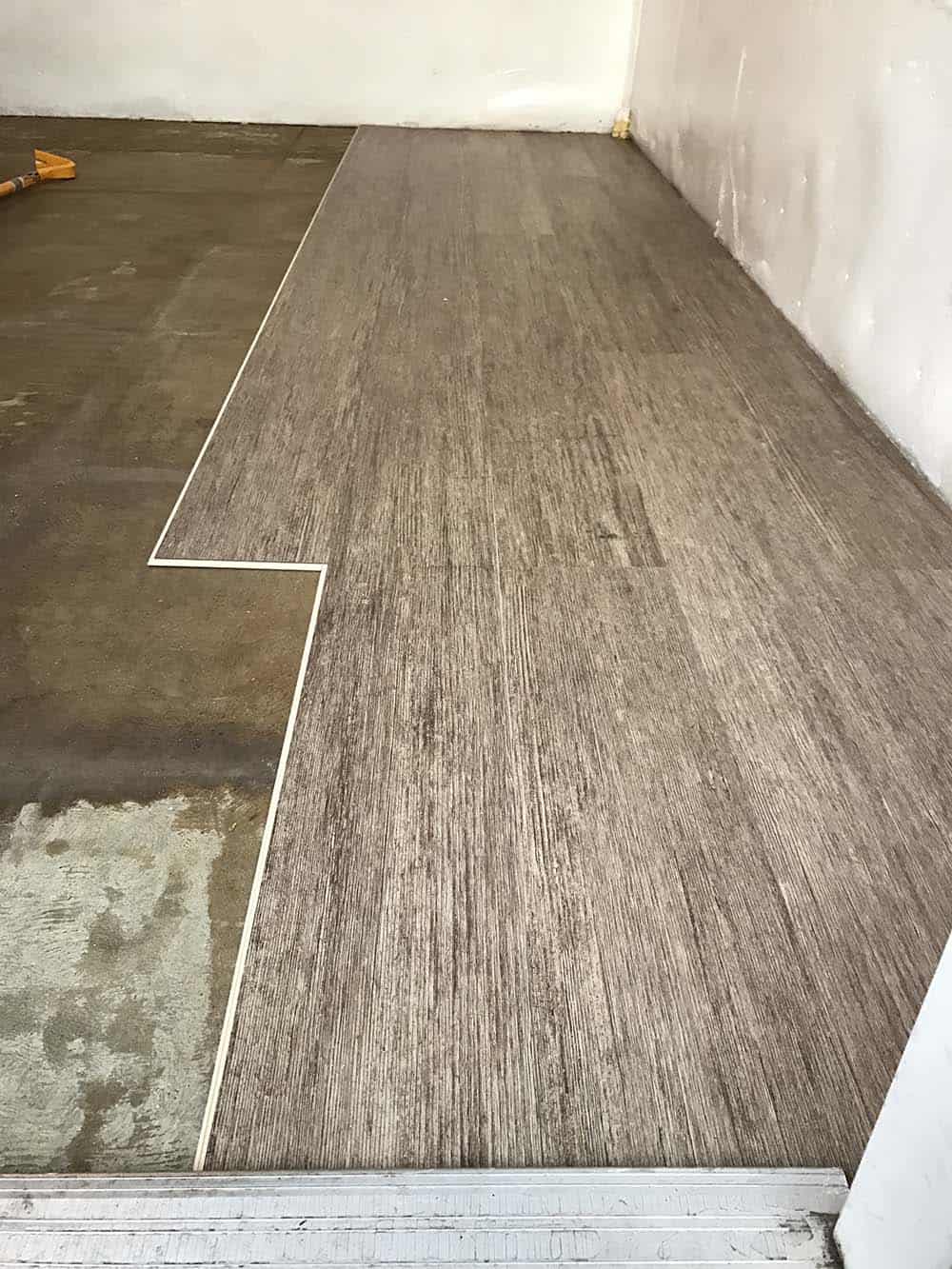
Once the flooring was in, that was it. We swept the room again, but there was no mess of tools or glue or any other hardware or building materials to clear. The floor is immediately ready to start using, which brings us to our final post in this series and that’s our review of how Floorte performs.
Here’s a quick video we took during the DIY install process.
This is a sponsored conversation written by me on behalf of Shaw Floors. The opinions and text are all mine.


